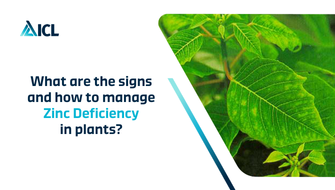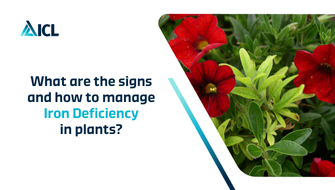Nitrogen (N) is a major plant nutrient and is the mineral element required in the highest quantities for normal plant growth. Plants can display signs of Nitrogen deficiency at any time of year.

Nitrogen Deficiency in Philadelphus
Why do plant leaves turn yellow?
A common symptom of N deficiency is yellowing of older (lower down) leaves – Chlorosis. Generally beginning at the leaf tips and margins, it creates a V-shaped pattern while leaf veins often remain green.
What are the symptoms of Nitrogen deficiency in plants?
- N-deficient plants often exhibit stunted, bushy growth – shorter stems / smaller leaves.
- Also, delayed flowering and fruit formation – impacting yield and productivity.
- Severe cases produce thin, weak and spindly stems – increasing risk of damage / breakage.
- As N-deficiency worsens, the entire plant may turn pale green or yellowish.

Nitrogen Deficiency in Doronicum
What are the issues with Nitrogen deficiency in winter?
During winter, most herbaceous and hardy nursery stock species remain relatively dormant. Potted stock growers had not expected to over-winter, is at particularly at risk of N-deficiency when controlled release fertilisers (CRFs) come to the end of their predetermined longevity.
Continental growers use more water-soluble fertilisers. During wetter months these can be quickly leached from outdoor grown stock. Meanwhile, opportunities to apply water-solubles to indoor grown stock during winter months are few – as plants are grown relatively dry. As a result, imported plants in early spring are often running low on N.
Topical tip: Now is a good time to plan ahead for topdressing – useful for kick starting spring sales of overwintered plants.
How to manage Nitrogen deficiency in plants?
- For crops that start to run out of N in winter, topdressing in early spring is a great way for quick greening up, helping to kick start early season sales: OsmoTop 2-3M (22-5-10) or Osmocote Topdress FT 4-5M (22-5-6 + 2MgO + TE)
- For N-deficiency during the active growing season: Fast acting Peters Professional Foliar Feed (27-15-12 +TE). Universol Green (23+6+10 +2MgO +TE) water soluble fertliser – or its hard or soft water versions. Universol HW 211 (23-10-10+2MgO+TE) or Universol SW 312R (18-7-12+6CaO+2MgO).
What is good practice for managing Nitrogen deficient plants?
- Ensure there is sufficient N in your growing media mix at the outset – the level will vary according to the length of the crop cycle, plant species etc.
- If reducing, or eliminating, peat from your substrate mix, take this into account when devising the nutrition package – as wood-based ingredients can lock-up N, making it less available to the plant.
- Traditionally extra N, often in the form of calcium nitrate, was added to the base fertiliser, however, this can be easily leached. As a result, ICL has developed a slow-release product, Osmoform High N (with 8-10 weeks release), and a controlled release base fertiliser Osmocote N (5-6 month).
Did you know?
While a few plant species (legumes) can fix N from the air (78% of air is N), the vast majority need to take the element up from the substrate through their roots.
N is needed for chlorophyll production, so a deficiency reduces the plant’s ability to photosynthesis and produce energy – impacting growth, flowering and fruiting.
Weakened and nutrient-deficient plants are more vulnerable to pest infestations and diseases, as they may lack the resources needed to defend themselves effectively.

Nitrogen Deficiency in Guzmania ‘Ostara’
0 Brands found
0 Products found
13 Resources found














